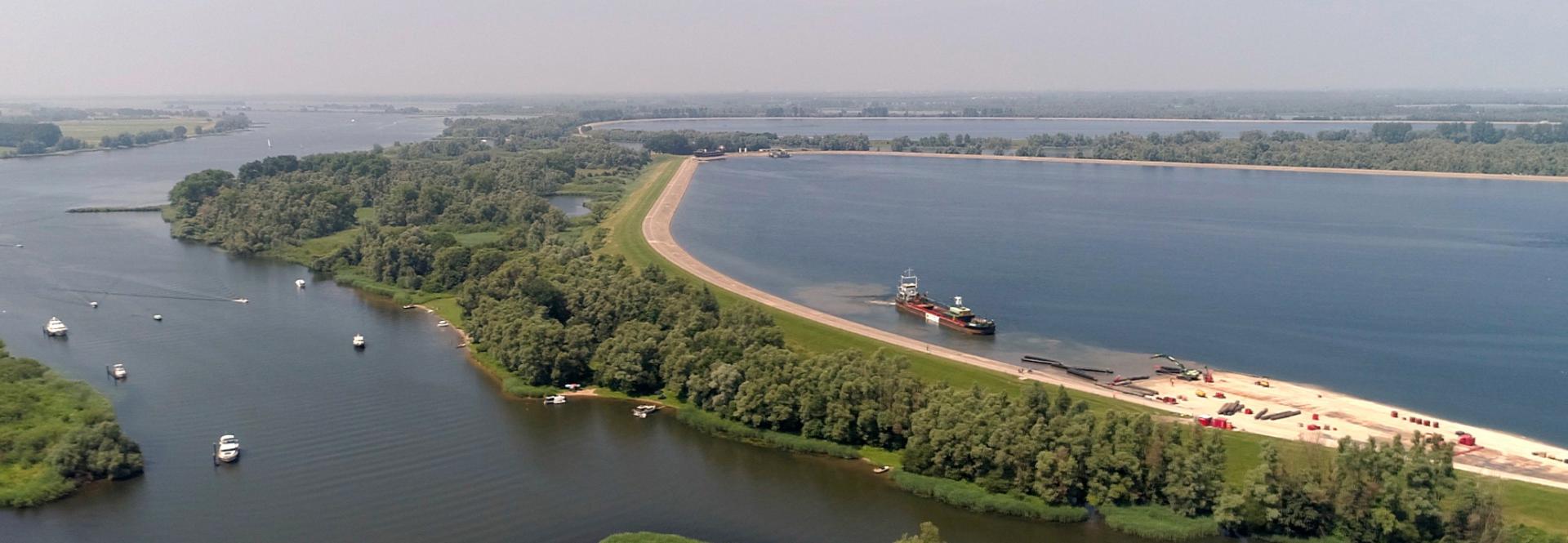News
Nearly 2 million cubic metres of soil ‘relocated’ to optimise De Gijster Reservoir
Over the past few years, De Gijster Reservoir in the Brabantse Biesbosch has been optimised to keep water quality at its current high level and to improve security of supply. In late June, the Evides Water Company and marine contractor Van den Herik rounded off work on the ‘Optimisation of De Gijster’ project. A total of 1.9 cubic metres of earth has been ‘relocated’ to restore the reservoir to its original design.
Take a look at the impressive project video here!
To guarantee the steady supply of sufficient reliable drinking and industrial water, it was necessary to remove the shoals along the banks of the reservoir and fill up its deeper sections. During the summer, the reservoir was affected by algal bloom. At the same time, the shallow zone along the banks was populated by Quagga mussels. These shoals weren’t allowed to dry up – to prevent massive numbers of mussels from dying off. As a consequence, the supply of usable water in the reservoir had gradually decreased to half its original volume. This decline has now been staved off with the realisation of new, steeper banks. The soil freed up by this operation was then deposited in the sections that were too deep – improving the circulation of water and air throughout the entire reservoir. Together, Evides and Van den Herik have succeeded in optimising De Gijster Reservoir, with two key results: improved water quality and greater security of supply thanks to a larger volume of usable water.
Preparations
In 2016, the parties commissioned a two-year study in preparation for the project, which went into a number of aspects, including local nature. In addition, they conferred with a variety of organisations, including Staatsbosbeheer, several municipal administrations, local stakeholders and the Province of Noord-Brabant. Once all permits had been issued, Evides – in its role as delegated client for Waterwinningbedrijf Brabantse Biesbosch (WBB) – gave the go-ahead to marine contractor Van den Herik. Evides set strict requirements for the project’s execution. For example, for effective natural purification of the water, it is important to avoid soil material from ‘whirling up’ from the bottom of the basins as far as possible. The contractor also needed to prevent the contamination of reservoir water by dredgers and work vessels.
Execution
In 2018 Van den Herik started excavating the strip of shallow water along the reservoir banks. Before this, the Mammoet heavy transport firm had moved equipment to the site via a unique operation over land and by water. To get the floating cranes into the closed reservoir, Mammoet rolled the vessels across dry land with the aid of heavy lifting bags. After this, two floating cranes and a cutter-suction dredger spent two years dredging and filling in the reservoir floor. The vessels’ fuel supply had to be adapted and their hull coating removed before they were allowed to work at this location. In addition, one vessel was fitted with a new duty cycle crane.
Facts and figures
The deepened strip of shoals along the banks was some 70 to 80 metres wide and covered an area of approximately 87 ha. Around 1.9 million cubic metres of sand were dredged along this zone. After mapping out local depths with soundings, the excess soil was moved in phases to the deeper sections. In the area around the reservoir’s high-voltage pylon, the contractor used a cutter-suction dredger – both for safety reasons and to avoid constantly having to pass under the power lines. In 2018 the deepest part of the reservoir had a depth of around -20 NAP. Following the project’s completion in 2020, the floor in the same section has been raised to around -14 NAP. The water level in the reservoir is +6.5 m NAP, and the volume of usable water has been increased by 1.9 million cubic metres.
Reservoirs
Evides operates three different reservoirs in the Brabantse Biesbosch: De Honderd en Dertig, Petrusplaat and De Gijster. The reservoir system provides a reliable and stable source of water suited for further treatment. On average, water is held in the reservoir basins for some five months, during which time it undergoes a natural pre-treatment. De Gijster’s primary function is retention. In cases where the intake of new water has been suspended – when water in the Maas River is of insufficient quality, for example – this supply can be used to bridge a contiguous two-month period.


